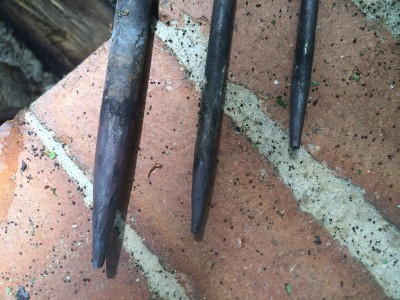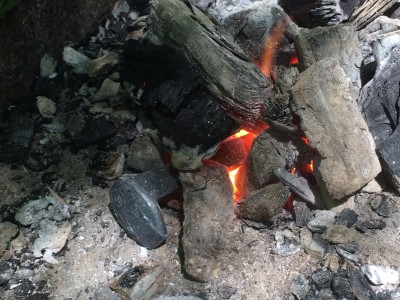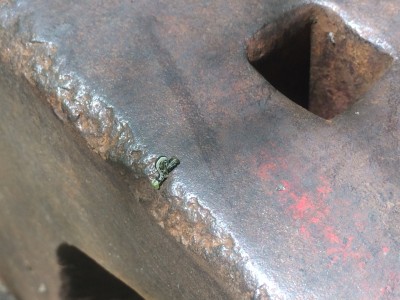Lessons From a Day of Tapers
So it’s been a while since I’ve written about blacksmithing. Truthfully, life happened, and I went several months without firing up the forge – which is just sad. But I’m happy to report that, at long last, I’m playing with fire again. My Muay Thai teacher often emphasizes how important it is to practice your basics. This principle transfers to many areas of life – including blacksmithing. Since I’d taken such a long break, I decided that I should review some basics and that the first day should be tapers. It’s not my strong point anyway.

So what did I learn from a day (or rather two days) of tapers? Turns out, there is always a lesson.
The act of tapering should draw the metal out – I knew this already. I had read it; I had heard it. But for some reason, it really clicked quite suddenly this time. The stock shouldn’t be spiraling or twisting. Don’t turn it while you’re striking. Just hold the hammer at an angle and use it to push metal out, then turn, then strike again. If you twist the stock during a strike, you run the risk of folding hot metal over on top of itself. While you might get a taper that looks decent, the metal is not hot enough to fuse (a.k.a. forge weld), so the taper with such a fold will be weaker than it would if the metal were simply drawn straight out. Makes using it for a metal punch rather dangerous.

Temperature is everything – I’ve actually said something similar before, as a general blacksmithing tip, but it’s really hard to cheat here. Getting the metal hot enough is essential to producing a good taper. It’s easier to bend or scroll colder stock than it is to taper it. Go for a bright orange to dark yellow. If you think you might be able to get a couple more strikes in before the stock gets too cold to work, go ahead and return it to the fire. It’s better for the metal. Remember that beating stock that is too cool can weaken it and even break it. Not to mention, bringing it back up to temperature is going to make it easier to work, which is better for your frame of mind and muscles. The metal will thank you and so will your arms.

If you think you can make your taper the slightest bit better with a few more strikes, stop – I admit to being a bit of a perfectionist, and while that can be a good trait if applied in moderation, it does get in my way from time to time. Given my developing skill level as a smith and the tools I have to work with, sometimes it’s just best for me to stop while I’m ahead, move on to the next, and try to do better with that one. Accepting that you can’t make them all perfect is part of the learning process. Your process will almost certainly be different than mine, but after you have broken a few tapers or folded the metal over on a couple, you’ll begin to recognize when you should stop and move on. You’ll probably really want to stick with the current one because “just one more strike is sure to make it better” but make yourself move on.

All in all, I was pleased with my tapering. Despite the mistakes, I see improvement and know some ways to make them better.
Sorry, Josh. While I had planned to make you a knife as a wedding present, you’re just going to have to wait. I want to give you something quality, and that means more time over the fire and more work on the basics. And that’s okay. I like getting all sooty anyway, and you really didn’t know about my plans until now.
Leave a Reply